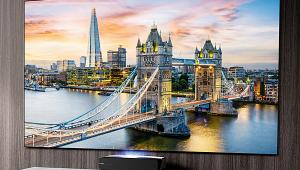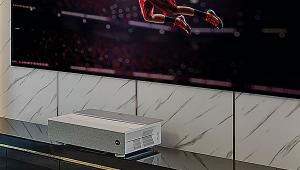Sony VPL-XW5000ES 4K laser projector review
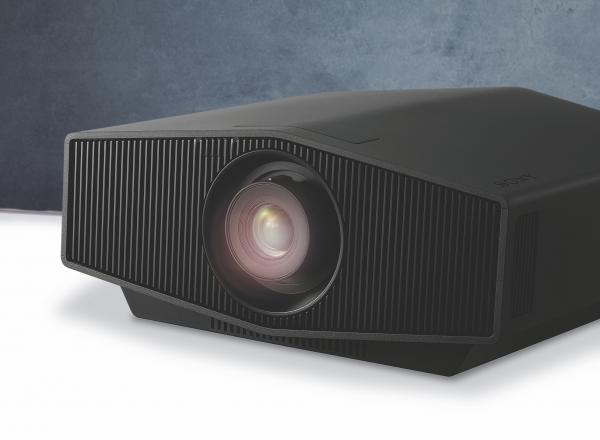
 Sony’s PJ line kicks off with this native 4K laser model. Steve Withers stacks it up against the competition
Sony’s PJ line kicks off with this native 4K laser model. Steve Withers stacks it up against the competition
Sony has dumped inefficient lamps and gone all-in on lasers for its projector lineup, with no fewer than five native 4K models using amplified light photons to generate their images. The top model – the VPL-GTZ380 – is a beast of a beamer that can generate a blinding 10,000 Lumens, but comes with an equally painful price tag of eighty grand. Naturally, the majority of home cinema owners will look at the other four.
The VPL-VW5000ES still claims an impressive 5,000 Lumens and sells for £49,999, while the VPL-VW890ES manages 2,200 Lumens, and is ‘only’ £24,999. Both those models are from earlier generations, though – new this year are the VPL-XW7000ES, with a rated 3,200 Lumens brightness and £14,999 price tag, and the entry-level VPL-XW5000ES, which is suggested can deliver 2,000 Lumens, and costs a more reasonable £5,999. It's this model that is on test, and one that replaces the outgoing lamp-based VPL-VW290ES as its 'entry-level' beamer.
High-end home cinema
No one, apart from maybe Elon Musk, is saying six grand is spare change. But when you consider the XW5000ES is a native 4K laser PJ, and its nearest competitor – JVC's DLA-NZ7 – is almost twice the price, it begins to look 'affordable'. At the same time, Sony projectors, and those of JVC, are the domain of the well-heeled home cinema enthusiast these days – both brands have long ceded the lower-end of the market to the likes of BenQ and Optoma.
To reach this new price point for one of its laser models Sony has sacrificed a few features. Zoom, shift and focus lens controls are all manual, so if you’ve got your heart set on a 2.35:1 screen this isn’t the beamer for you. The XW5000ES also drops 3D support, and as this remains popular with projector owners, the omission could be a deal-breaker. More surprising, though, is the absence of HDMI 2.1 inputs, and thus no support for HDR10+ or 4K/120p playback for high-frame-rate gaming. This limitation not only puts the XW5000ES at a disadvantage to the pricier JVC projector, but also the cheaper Epson EH-LS12000B), which includes motorised lens controls and memories for ‘Scope screens as well.
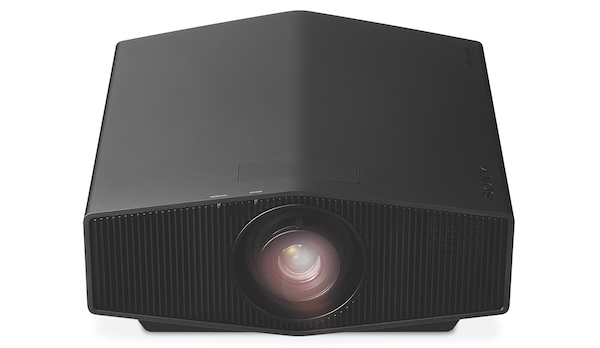
Native attraction
Of course, Epson's model doesn't deliver a native 4K image, whereas Sony here uses a new 0.61in SXRD panel which can achieve a native resolution of 3.840 x 2,160 pixels without resorting to flashing or pixel-shifting trickery. Previous Sony projectors used the larger 4,096 x 2,160 panel found in the brand’s professional units – the reduced size results in a more compact chassis.
The design is similar to previous generations, with an angular shape, central lens, air intake grilles at the front, and exhaust vents at the rear reminiscent of the discontinued VPL-VW790ES. Thankfully, Sony has filled in the gap around the lens that made the VW790ES look like it was missing a piece of the front panel. There’s also a choice of finishes between matte black and a more living room-friendly matte white.
Connections are located along the left-hand-side as you face the lens, and here you’ll find two HDMI 2.0 inputs, a USB port for power, a 12V trigger, an IR input, and an RS-232 connector for serial control. The XW5000ES also supports control systems from Control4, Crestron, Savant, and AMX, which explains the popularity of Sony projectors with custom installers.
The remote – Sony’s standard PJ zapper – is fairly large, includes a backlight, and has all the buttons you’ll need to operate the XW5000ES. Yet the manual lens controls are rather clumsy, making setup trickier than it should be. The XW5000ES' s 1.38:1 to 2.21:1 throw ratio with 1.6x zoom is less generous than some comparable projectors.
In terms of specs, the unit supports resolutions up to 4K/60p, and high dynamic range in HDR10 and HLG guise. Sony also claims the combination of new Wide Dynamic Range optics and its Triluminos Pro colour algorithm can deliver 95 per cent of DCI-P3, but in my testing it only achieved a maximum coverage of 83 per cent. The claimed 2,000 Lumens output is on the money, although to maximise light output you’ll need to move the laser control to its highest setting. Thankfully, doing so doesn’t significantly increase fan noise, which stays at around 30dB.
A rated contrast ratio of 'infinity to one' is somewhat misleading given this can only be achieved on a black screen with the laser turned off, but Sony isn't the only brand to pull this marketing sleight of hand. Native contrast is closer to 20,000:1 based on my measurements, which is better than Epson's EH-LS12000B but half that of JVC's DLA-NZ7. In other words, what I'd expect given the price point.
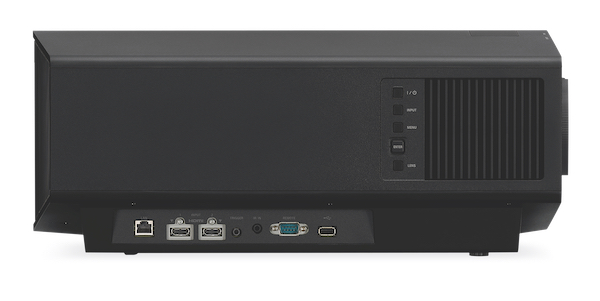
Also as expected, Sony lays on a host of cutting-edge imaging technologies based around the X1 Ultimate for Projector processor first introduced on the GTZ380. There’s Motionflow for ironing out any judder and Reality Creation to sharpen upscaled HD and native 4K content. There’s also Sony’s Dynamic HDR Enhancer, but more on that later.
Vision of the future
The XW5000ES wows immediately with its bright and detailed performance, although it isn’t quite as sharp
as earlier Sony 4K projectors. Since the lens appears to be the same, this is likely due to the smaller SXRD panels used. However, upscaling is top notch, while Reality Creation brings out improved textures and greater levels of detail, regardless of source.
Watching David Cronenberg’s new Crimes of the Future on Blu-ray (US import) reveals a well rendered upscaled image that displays all the finery of the film’s dilapidated vision of a crumbling society. Sony's processing is so effective that it almost looks like native 4K, but sadly also reveals the limitations of the film’s meagre budget CGI!
If there’s one area where Sony projectors are particularly strong, it’s motion. True Cinema doubles the frame rate to smooth out annoying judder without introducing serious artefacts. The scene in Lucy (4K BD) where the title character finally begins to access the full potential of her unlocked brain involves the camera whirling around her, and all this motion is handled by the XW5000ES with remarkable skill.
The projector proves a capable performer with HDR content but, as is often the case, a degree of optimisation is necessary. Whether it’s SDR or HDR, the Reference picture setting will get you closest to industry standards, and the basic tone mapping tracks the PQ target closely. However, it does lack a degree of ‘pop’, which brings us neatly to Sony’s Dynamic HDR Enhancer.
The inherent brightness limitations of any projector make delivering HDR challenging, and a degree of image manipulation necessary. Sony’s HDR processing changes the contrast and laser brightness depending on the overall content, but is not dynamically adjusting tone mapping on a frame-by-frame basis. As a result, Sony’s approach to tone mapping is blunter and less sophisticated than that of JVC's newest DLA devices.
Having said that, it gets results. Viewing The Revenant (4K BD) with the Dynamic HDR Enhancer engaged reveals a strikingly detailed and impactful image, with a pleasing intensity to the white, snow-covered landscapes. You can almost feel yourself squinting as sunlight reflects off icy lakes. The higher setting you choose for Dynamic HDR Enhancer, the greater the effect – but be careful of clipping the brightest whites.
Despite not reaching the full DCI-P3 gamut, the XW5000ES manages to deliver pictures with plenty of colour saturation and nuanced shades. The Greatest Showman (4K Blu-ray) sports an opulent palette that the projector dives right into. Once again, the HDR processing also gives the image a dynamic push.
Where this Sony projector does slightly falter is with darker scenes, revealing blacks that lack real depth. More significantly, the Dynamic HDR Enhancer often sacrifices shadow details in pursuit of brighter specular highlights – in an attempt to boost the brighter parts of an image, the darker parts appear compressed in comparison.
This is particularly obvious during the nighttime sequence in 1917 (4K BD) where the screen starts completely black before gradually revealing more details in the image. The XW5000ES struggles to correctly reproduce this scene, burying important details in murky shadows. Turning off the HDR Enhancer helps to a degree, but I have seen this difficult sequence handled better.
It’s a real shame that Sony has decided not to include 4K/120p support, because in all other respects this new laser-based model is an excellent choice for gamers. Bright images, saturated colours, and superior motion create an excellent gaming experience. It’s responsive too, with an input lag that’s incredibly low for a projector, hitting 20ms with 4K/60p and 12ms with 2K/120p.
Motion slickness
Overall, the XW5000ES is an impressive addition to Sony’s lineup, offering bright and dynamic native 4K pictures that benefit from some capable (but not best-in-breed) HDR tone mapping. The brand's state-of-the-art image processing upscales lower resolutions with panache, and Reality Creation sharpens objects without introducing obvious artefacts. The motion handling is also class-leading, and while black level performance is outgunned
by rival JVC models in particular, it's still good.
The lack of 3D playback and HDMI 2.1 connectivity will disappoint some, but Sony's somewhat stripped-back feature set has enabled it to hit a price point that would have once only got you one of its lamp-based beamers. If you want to enjoy the full benefits of native 4K and a laser light source, the XW5000ES is the first place to look.
HCC Verdict: 4.5/5
Sony VPL-XW5000ES
Price: £5,999
www.sony.co.uk
We say: This native 4K projector cuts a few corners to hit its price-point, but impressive HDR delivery and Sony’s all-round imaging wizardry pay dividends.
Specifications
3D: No 4K: Yes. 3,840 x 2,160 HDR: Yes. HDR10; HLG CONNECTIONS: 2 x HDMI inputs; Ethernet port; USB port; 12V trigger; IR input; RS-232C BRIGHTNESS (CLAIMED): 2,000 Lumens CONTRAST (claimed): 'Infinity to 1' (dynamic contrast) ZOOM: 1.6x DIMENSIONS: 460(w) x 200(h) x 472(d)mm WEIGHT: 13kg
FEATURES: SXRD projector technology; laser phosphor light source; claimed average life of 20,000 hours; 24dB claimed fan noise; Wide Dynamic Range Optics; X1 Ultimate for Projector processor; Motionflow; Reality Creation; Object-based HDR Remaster; Dynamic HDR Enhancer; Input Lag Reduction; 1.38-2.21:1 throw ratio; manual lens controls for zoom, shift and focus; IMAX Enhanced; Control4, Crestron, Savant and AMX support
 |
Home Cinema Choice #351 is on sale now, featuring: Samsung S95D flagship OLED TV; Ascendo loudspeakers; Pioneer VSA-LX805 AV receiver; UST projector roundup; 2024’s summer movies; Conan 4K; and more
|















